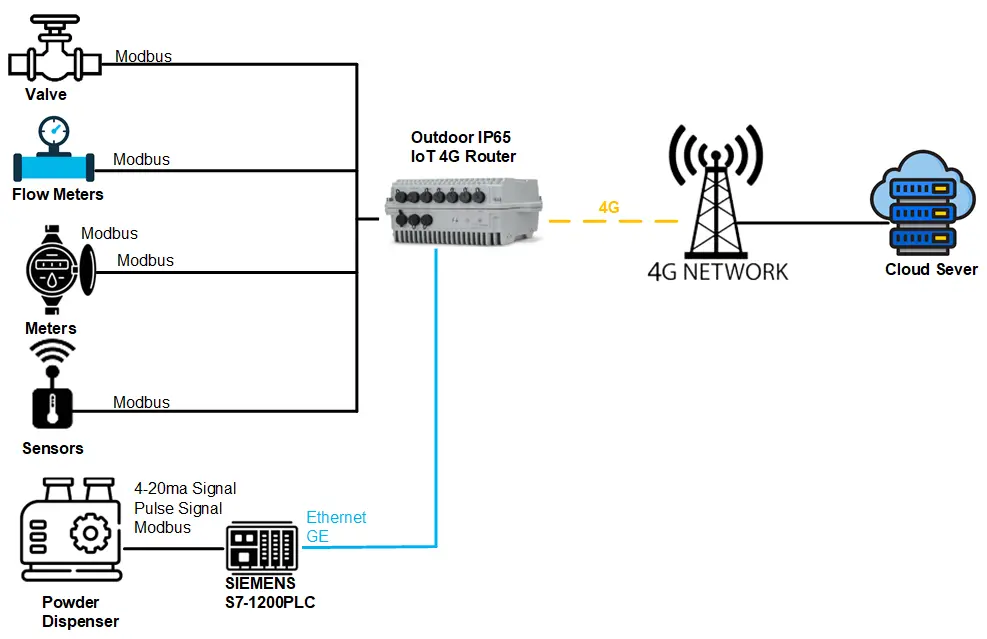What is IoT 4G Router and How to Deploy 4G IoT Router it in Outdoor?
Table of Contents

What is IoT 4G Router and How to Deploy 4G IoT Router it in Outdoor?
Many IoT sensors and IoT devices do not have the ability to transmit data via 4G, and many of them do not have the ability to calculate and control. As an edge control device of IoT, IoT 4G Router first reads the data of IoT sensors and IoT devices through various industrial or IoT data interfaces, processes and calculates them in IoT 4G router, and then uploads them to cloud server via 4G. As an indispensable IoT edge device, IoT 4G router plays a vital role. However, there are many areas that need special attention when deploying 4G IoT router outdoors.
IoT 4G Router in the network topology

Please refer to the above figure for the location of IoT 4G router in the network topology. 4G IoT router is generally located at the edge network. There are various IoT sensors downstream, such as:
Smart Valve
Flow Meters
Water Meters
Temperature Sensors
PLC
We found that these sensors generally act on a certain functional area or some kind of control. However, it generally requires external control or reading of its data as the basis for other device control. Cloud sever cannot directly read or control these devices. Therefore, 4G IoT router acts as an intermediate medium to convert and control the protocol.
There are generally two types of IoT 4G Routers on the market:
- Transparent Transmission Type
The transparent transmission type is essentially a protocol converter that converts Modbus to Modbus TCP or MQTT, and then sends information and data to the cloud sever.
- Edge Computing and Control Type
Edge computing type is more powerful and has computing and control capabilities at the edge. At this time, cloud sever is often only used as the subject of information aggregation and configuration distribution. All calculations occur locally on the IoT 4G router.
Of the above two types, the transparent transmission type has a relatively low cost, but it will add a lot of burden to the cloud server and is relatively inflexible. The edge computing type can perform distributed computing and control locally, thus greatly simplifying the software architecture and hardware configuration of the cloud server. If the cost is acceptable, we believe that the edge computing and control type 4G IoT router is the best choice.
How to Deploy 4G IoT Router it in Outdoor

The figure above shows the Edgeware all-in-one IP65 IoT 4G router in the network topology. In fact, many IoT scenarios are deployed outdoors. For example, in the example above, smart valves, flow meters, and temperature sensors are usually deployed outdoors. When they are outdoors, many additional factors need to be considered. The IP65 4G IoT router designed by Edgeware is designed as an all-in-one box, with the following factors taken into consideration:
(1) UPS and batteries are integrated into the enclosure
(2) The system is designed to be IP65-level protected, and the shell is completely rust-proof to better adapt to the outdoor environment.
(3) Programmable edge computing and control core to achieve edge iot control and more flexible edge cloud synchronization.
(4) Complete lightning protection design to facilitate long-term stable outdoor operation.
(5) Add POE+ ports for POE type devices access.
(5) The core components of the entire system can be monitored and managed by cloud server.
Related Models


